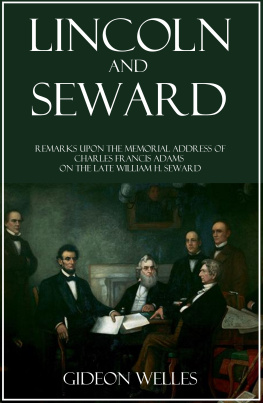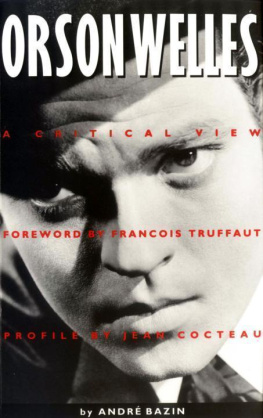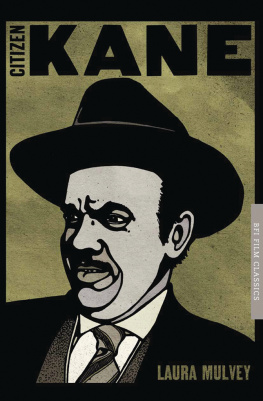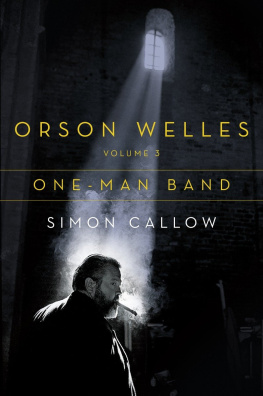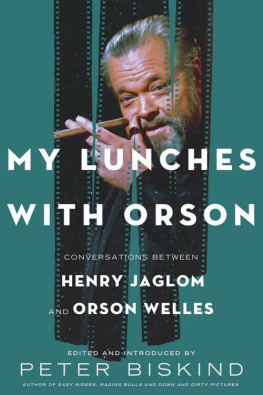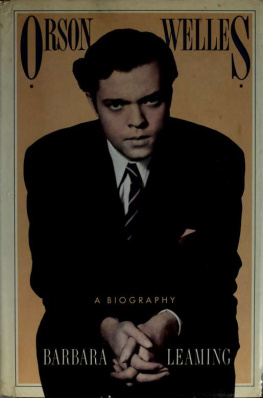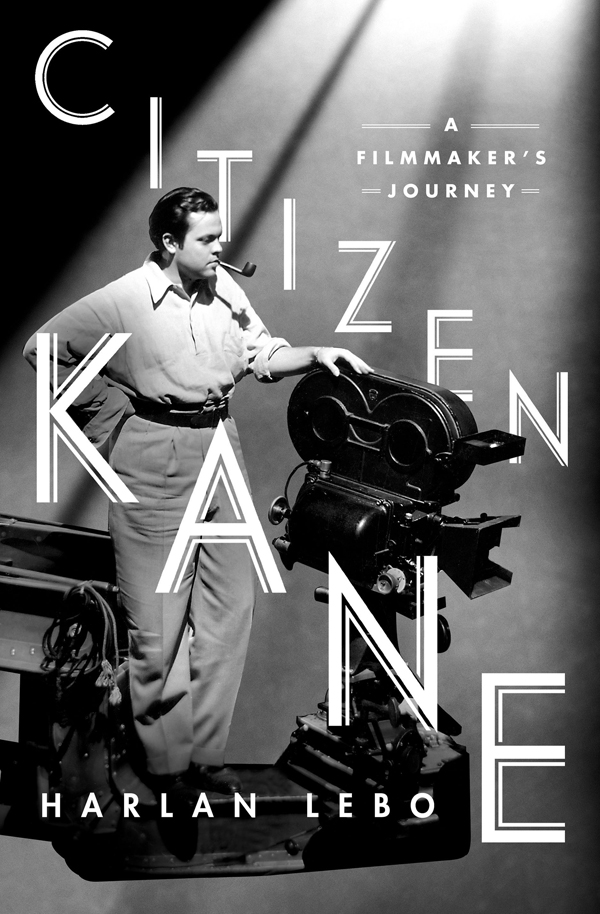Contents
Guide
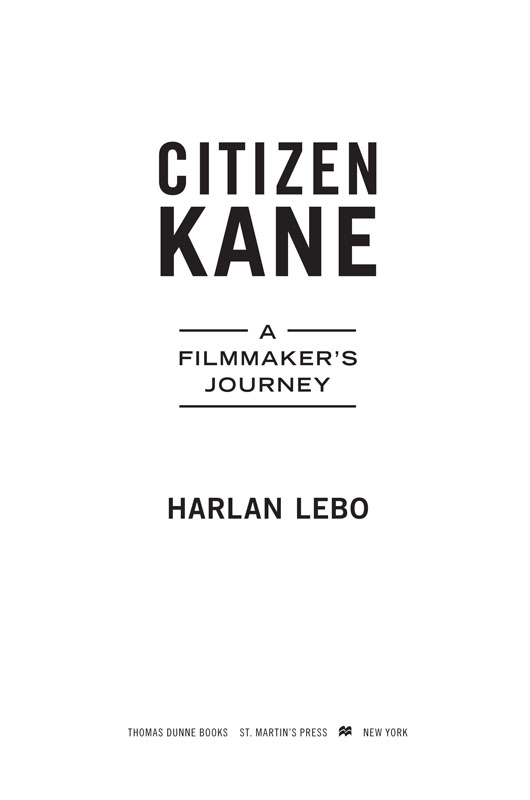
The author and publisher have provided this e-book to you for your personal use only. You may not make this e-book publicly available in any way. Copyright infringement is against the law. If you believe the copy of this e-book you are reading infringes on the authors copyright, please notify the publisher at:
us.macmillanusa.com/piracy.
For Monica
The Illustrations
This is the second book I have written about Citizen Kane: the first, for the fiftieth anniversary of the film, was a coffee table book with limited text that was created to showcase photographs of the production; it was published before the broad use of the Internet or easily searchable media such as DVDs and video downloads were widely available (as incredible as it may seem, there was such a time).
For this new bookwhich is meant to be read and not just perusedI chose a different approach for the illustrations. First, I have included images that show some of the background, people, and incidents that occurred before, during, and after the making of Citizen Kane; then, to complement your reading of the book and viewing of the film, you will find two guides:
The Notes section, which will show you the exact time of every shot discussed in the text.
To further assist your reading and viewing, I have also compiled a Scene-by-Scene Guide, which includes every shot in the film and the time each occurs.
Of course, there is no better source of illustrations than Citizen Kane itself. I encourage you to use a video of Citizen Kane as a companion to your readingespecially the superb Blu-ray that was released in 2011. I hope the guides included here will amplify your exploration of the film.
The Text
This book was written using material drawn from interviews with participants in the making of Citizen Kane; reviews of more than four thousand pages of studio files, including production reports, business memos, script drafts, financial records; quotations from a score of books and unpublished research; details culled from articles and news accounts that appeared in film industry journals, daily newspapers, and magazines from 1938 to 1941; radio programs; information included in my first book; and, of course, notes gathered during dozens of full-length viewings of Citizen Kane and individual reviews of every shot.
Those participants in Citizen Kane who in conversations with me added their thoughts to the creation of this bookWilliam Alland, Ruth Warrick, Richard Wilson, and Robert Wiseprovided a dimension that would have been impossible otherwise. Sadly, these fine people, and most of the rest of the cast and crew who worked on the production of Citizen Kane, are now gone. Fortunately, our endless fascination with Hollywood offers readers a seemingly inexhaustible supply of biographies and historical accounts that chronicle the lives of key figures and events from the golden age of the motion picture industry.
However, in Hollywood legend blends easily with reality. The passage of time and the frailty of the human ego tend to blur the distinction between fact and invention, especially when events are recalled decades after they occurred.
These inaccuracies sometimes seep into other publications, both in print andespeciallyonline, where such findings are often accepted as fact without attribution. Orson Welles was a gifted storyteller, but with all due respect, he was also a font of erroneous information who would correctly recount the substance of an incident but often shape the characters and locations to suit his audience. Seventy-five percent of what I say in interviews, he told Jean Clay in 1962, is false. With hundreds of Web sites devoted to Welles and his films, facts as recounted by Welles and others about Citizen Kane tend to circulate and recirculate without citing an original source.
So whenever possible, I have relied on the original words of the people involved as found in their correspondence, memos, and confirmed quotesand not the publications, online or otherwise, of others.
Finally: I am sure your enjoyment of this book will be enhanced by watching Citizen Kane . I believe that a fresh viewing will reinforce the most important point of this book: that Citizen Kane is a cinema experience unlike any other.
Happy readingand viewing!
H. L.
Your comments about this book are welcome.
Please write to the author at leboprojects@gmail.com
At the top of a private castle on a man-made mountain in Florida, newspaper publisher Charles Foster Kane lies dying. With his final breath, he whispers, Rosebud. From Kanes hand slips a glass snow globe containing a tiny cabin, which shatters on the floor.
A newsreel company prepares a film obituary of Kane. But Rawlston, the head of the company, is not happy with the production; it captures the highlights of Kanes life, but not its meaning. The story needs an angle, so Rawlston dispatches Jerry Thompson, one of his reporters, to discover the significance of Kanes last word. Itll probably turn out to be a very simple thing, Rawlston says.
From the recollections of five people, Thompson learns about the key events in Kanes life. In the memoirs of Walter Thatcher, Kanes deceased banker and guardian, Thompson reads the story of Kanes youth and how his mother became a millionaire overnight when a supposedly worthless gold mine given to Mrs. Kane by a defaulting boarder actually contains the Colorado Lode. Kanes mother signs over management of the fortune as well as guardianship of the eight-year-old boy to Thatchers bank.
Kanes wealth grows into the worlds sixth-largest private fortune by the time Thatchers guardianship ends on Kanes twenty-fifth birthday. But of all his vast holdings, Kane is interested only in the Inquirer, a failing newspaper. Kane takes over as publisher of the Inquirer, becomes a public crusader, and saves the newspaper, but not without resorting to grossly irresponsible journalism.
From Bernstein, Kanes general manager, Thompson learns about the early days of Kanes careerand his success in building a publishing empire. Kane writes a Declaration of Principles that promises readers he will provide the news honestly and without influence by special interests, and will serve as a fighting and tireless champion of their rights as citizens and as human beings. Jed Leland, Kanes best friend and drama critic for the Inquirer, asks to keep the declaration, believing it will become an important document.
As a result of Kanes leadershipand scandal-filled storiesthe Inquirer becomes the largest-circulating newspaper in New York. From Bernstein, Thompson also learns about Kanes passion for antiquities and his engagement to Emily Monroe Norton, niece of the president of the United States.
Thompson then meets Leland, long since estranged from Kane, who tells of the deterioration of Kanes first marriage, the rise of the publisher to political power, and his dramatic fall after meeting Susan Alexander, a sheet music clerk whom Kane befriends in an innocent relationship.
Kane becomes the leading candidate for governor of New York, but only days before the election, Boss Jim Gettys, a corrupt political leader, threatens to expose Kanes love nest with Susan unless Kane withdraws. Kane refuses, and the resulting scandal ends his marriage, his political ambitions, and his friendship with Leland, who transfers to the Chicago Inquirer after a quarrel with Kane about the publishers motivations. Two years later, Kanes ex-wife and their son are killed in an automobile accident.



